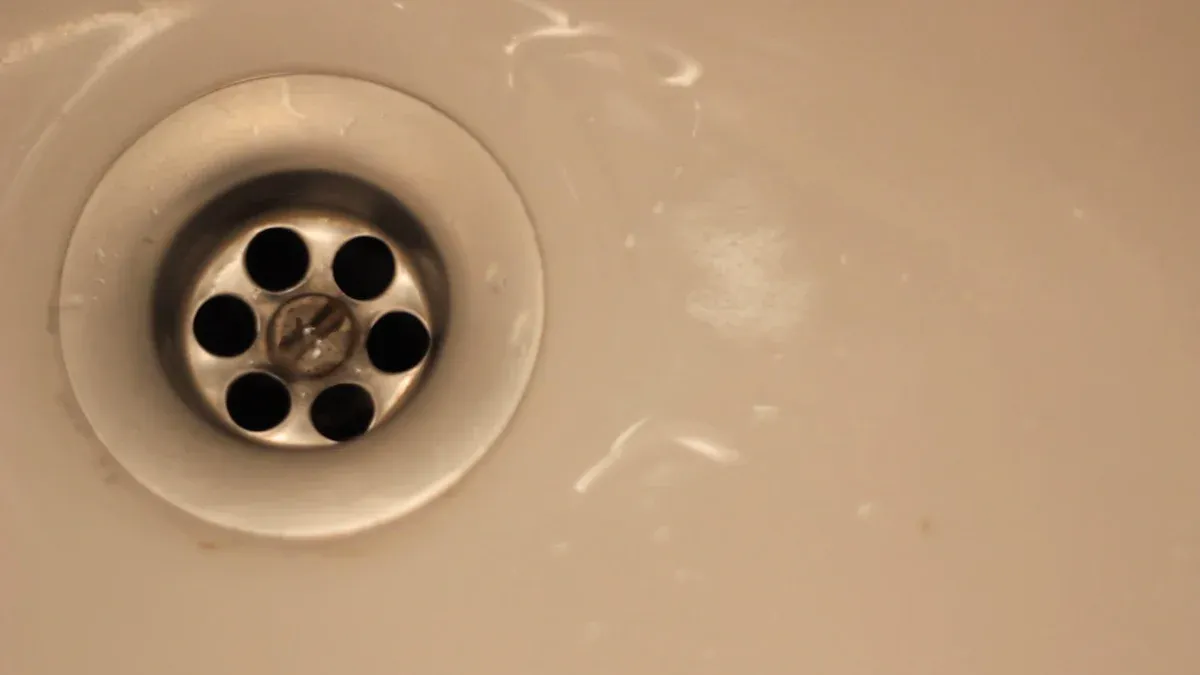
Sink marks can significantly impact the quality and appearance of injection-molded products. As a manufacturer, you know these defects often arise in thick-wall parts, where uneven cooling leads to surface depressions. These imperfections not only reduce product strength but also affect customer satisfaction. In 2025, advanced technologies offer new ways to tackle these issues. By adopting innovative solutions, you can ensure your parts meet high standards while maintaining efficiency.
Sink marks are surface depressions that appear on injection molded parts, typically in areas with thicker wall sections. These imperfections occur when the material shrinks unevenly during cooling, leaving visible indentations. You’ll often find sink marks near ribs, bosses, or other features where the wall thickness varies. They not only affect the aesthetic appeal of the part but also compromise its structural integrity.
Tip: To minimize sink marks, design ribs to be 50% to 60% as thick as the nominal wall and ensure proper cooling and venting during the molding process.
The causes of sink marks stem from the physical behavior of plastic during the injection molding process. In thicker wall sections, the material retains heat longer, leading to slower cooling and uneven shrinkage. This differential cooling creates surface deformations. Key factors contributing to sink marks include:
When these conditions occur, the plastic flows unevenly, causing the surface to warp or sink. The injection molding industry has historically faced significant challenges due to these defects, with losses exceeding $20 billion annually. However, advancements like machine learning are projected to reduce these losses by 40% by 2025.
Thick-wall parts are particularly prone to injection molding sink marks due to their geometry and cooling behavior. Variations in wall thickness lead to differential cooling rates, which are a primary cause of sink marks. In thicker areas, the material shrinks more significantly, creating stress points that result in surface depressions.
Ensuring consistent wall thickness throughout the part can help reduce stresses and avoid warping. Adjustments in tooling design, such as optimizing cooling channels and gate locations, also play a crucial role in mitigating sink marks. By addressing these factors, you can improve the quality of injection molded parts and reduce defects.

The design of a plastic part plays a critical role in ensuring uniform cooling and reducing the risk of sink marks. You should aim for consistent wall thickness throughout the part. Variations in thickness lead to uneven cooling, which causes shrinkage and surface depressions. By maintaining uniformity, you can prevent sink marks and improve the overall quality of your product.
In addition to wall thickness, consider the placement of ribs and bosses. These features often create areas of increased thickness, making them prone to sink marks. To address this, you can design ribs to be thinner than the nominal wall thickness. Proper placement of cooling channels in the mold also ensures even heat dissipation, further minimizing sink marks.
Tip: Use simulation tools to analyze cooling patterns and identify potential problem areas in your design. This proactive approach helps you optimize the design before production begins.
Choosing the right material is essential to minimize sink marks in injection-molded parts. Materials with lower shrinkage rates reduce the likelihood of uneven cooling and internal stress. For example, certain grades of polypropylene or polycarbonate exhibit better dimensional stability, making them ideal for thick-wall parts.
When selecting materials, you should also consider properties like melt viscosity and flow rate. These factors influence how the material fills the mold and cools. Materials with consistent flow properties ensure even distribution, reducing the risk of sink marks.
By choosing the right material, you not only minimize sink marks but also enhance product durability and appearance. This approach saves costs by reducing rework and speeding up time-to-market.
Adjusting the injection molding process is another effective way to prevent sink marks. You can start by optimizing packing pressure. Higher packing pressure ensures that the material fills the mold completely, reducing voids and shrinkage. However, excessive pressure may cause other defects, so finding the right balance is crucial.
Cooling time is another critical factor. Allowing the part to cool sufficiently before ejection ensures that the material solidifies evenly. Short cooling times often lead to uneven shrinkage, increasing the risk of sink marks.
Gate location also plays a significant role. Placing gates near thicker sections of the part ensures better material flow and reduces the likelihood of sink marks. You should work closely with your tooling engineers to determine the optimal gate placement for your design.
Note: Regularly monitor and adjust process parameters during production. Continuous monitoring helps you identify and address issues before they affect product quality.
By combining design optimization, material selection, and process adjustments, you can effectively minimize sink marks and produce high-quality plastic parts.

Artificial intelligence (AI) has revolutionized the way you can predict and prevent sink marks in injection molding. AI-driven simulations analyze complex variables like material flow, cooling rates, and shrinkage patterns. These tools provide accurate predictions of where sink marks might occur, allowing you to address potential issues before production begins.
For example, AI can simulate how different gate locations or cooling channel designs impact the final product. This insight helps you make informed decisions during the design phase. By using AI, you reduce trial-and-error processes, saving both time and resources.
Tip: Incorporate AI-based software into your workflow to identify problem areas early and optimize your designs for better results.
In 2025, new materials have emerged to combat sink marks effectively. These materials are engineered to minimize shrinkage and improve dimensional stability. For instance, advanced polymers with lower melt temperatures and optimized flow properties ensure even cooling and solidification.
Recent research highlights key performance metrics for these materials:
| Performance Metric | Description |
|---|---|
| Rib Thickness | Optimized to minimize sink depth. |
| Mould Temperature | Elevated to foster uniform cooling, reducing differential shrinkage. |
| Melt Temperature | Lowered to alleviate thermal stress, resulting in more uniform solidification. |
| Coolant Temperature | Optimized to minimize cooling time, reducing uneven cooling and stresses. |
| Pressure Holding Time | Decreased to prevent excessive material packing and sink marks. |
| Relaxation Time | Controlled to ensure uniform stress redistribution, mitigating defects. |
By selecting innovative materials and adhering to these metrics, you can significantly reduce sink marks while enhancing product quality.
Smart manufacturing integrates advanced technologies like IoT sensors and real-time monitoring to improve quality control. These systems track critical parameters such as temperature, pressure, and cooling rates during production. You can use this data to detect anomalies and make adjustments instantly.
For example, IoT-enabled molds can monitor cooling uniformity, ensuring consistent results across all parts. Automated feedback loops also allow you to fine-tune the process without manual intervention. This approach not only reduces defects like sink marks but also boosts overall efficiency.
Note: Implementing smart manufacturing techniques ensures consistent quality and reduces waste, making your production process more sustainable.
Collaboration between design and engineering teams is essential to prevent sink marks and other cosmetic defects. Designers focus on the part's appearance and functionality, while engineers ensure the manufacturing process supports these goals. By working together, you can address potential issues early in the development phase.
For example, engineers can provide insights into wall thickness analysis, helping designers create parts with uniform thickness. This reduces the risk of uneven cooling and shrinkage. Similarly, designers can share aesthetic requirements, ensuring the final product meets customer expectations. Regular communication between teams fosters a proactive approach, minimizing costly revisions later.
Tip: Schedule joint reviews during the design phase to identify and resolve potential challenges before production begins.
Simulation tools like mold flow analysis (MFA) play a critical role in identifying and addressing sink marks. These tools allow you to analyze cooling patterns, material flow, and shrinkage behavior before production starts. By using MFA, you can pinpoint areas prone to cosmetic defects and make necessary adjustments.
For instance, MFA helps identify potential weld line locations and air traps, enabling you to modify the mold design effectively. Cooling simulations also highlight risk areas for sink marks, guiding you to optimize cooling channel designs. Adjusting wall thickness and holding parameters based on simulation results ensures both structural integrity and a flawless appearance.
Note: Incorporating simulation tools into your workflow saves time and resources by reducing trial-and-error during production.
Continuous monitoring and quality checks during production are vital for maintaining high standards. IoT-enabled sensors can track critical parameters like temperature, pressure, and cooling rates in real time. This data allows you to detect anomalies and make immediate adjustments, ensuring consistent results.
Regular inspections also help identify cosmetic defects early, preventing defective parts from reaching customers. You can use automated systems to streamline quality checks, improving efficiency and reducing human error. By maintaining strict quality control, you enhance the appearance and durability of your products, boosting customer satisfaction.
Tip: Establish a feedback loop between production and quality teams to address recurring issues and improve processes over time.
Sink marks remain a challenge in injection molding, especially for thick-wall parts. Uneven cooling and material shrinkage often cause these defects. Modern solutions like optimized designs, advanced materials, and process adjustments have proven effective in addressing this issue. In 2025, adopting technologies such as AI-driven simulations and smart manufacturing will further enhance quality control. By embracing innovation, you can reduce defects, improve product durability, and meet customer expectations. Prioritizing quality ensures your products stand out in a competitive market.
Sink marks are surface depressions that occur when the material in thicker sections of a part cools and shrinks unevenly. These defects often appear near ribs, bosses, or other features with varying wall thicknesses.
You can prevent sink marks by maintaining uniform wall thickness, optimizing cooling channels, and using materials with low shrinkage rates. Adjusting process parameters like packing pressure and cooling time also helps reduce these defects.
Thick-wall parts cool unevenly due to their geometry. The material in thicker sections retains heat longer, causing differential shrinkage. This uneven cooling leads to surface depressions, making thick-wall parts more susceptible to sink marks.
Material selection is crucial in injection molding. Materials with lower shrinkage rates and better dimensional stability reduce the risk of sink marks. Choosing materials with consistent flow properties ensures even cooling and minimizes surface defects.
AI-driven simulations predict potential sink marks by analyzing variables like material flow and cooling rates. These tools allow you to address issues during the design phase, reducing trial-and-error and improving product quality.